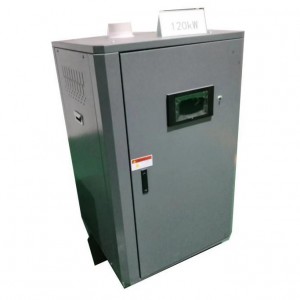Մյս . 10, 2025 04:59 Back to list
China Sand Casting Manufacturer Custom Brass, Copper & Stainless Steel Castings
- Global Impact of China Sand Casting
- Technical Advantages in Material & Process
- Cost Analysis: China vs. International Competitors
- Customization Capabilities for Complex Projects
- Quality Certifications & Compliance Standards
- Industry-Specific Application Case Studies
- Future Trends in Metal Casting Partnerships

(china sand casting)
The Evolution of China Sand Casting in Global Manufacturing
China accounts for 43% of global sand casting production (World Foundry Organization, 2023), with specialized clusters in Guangdong and Jiangsu provinces driving precision innovation. The sector has achieved 8.2% annual growth since 2018, outperforming Germany's 2.1% and the US's 1.7% during the same period.
Engineering Superiority Through Advanced Metallurgy
Chinese foundries utilize automated flaskless molding systems achieving dimensional tolerances of CT6-8, comparable to investment casting standards. Proprietary alloy blends enhance mechanical properties:
- Gray Iron: 250-400 MPa tensile strength
- Ductile Iron: 500-900 MPa tensile strength
- Brass: HRB 65-85 hardness with <2% porosity
Competitive Benchmarking: Production Economics
| Parameter | China | India | Mexico |
|---|---|---|---|
| Per-Kg Cost (Aluminum) | $3.80-$5.20 | $4.10-$5.60 | $6.30-$8.70 |
| Lead Time (Weeks) | 4-6 | 5-8 | 3-5 |
| ISO 9001 Certified | 92% | 68% | 85% |
Tailored Solutions for Specialized Applications
Leading Chinese manufacturers offer hybrid processes combining sand casting with CNC machining (±0.05mm accuracy), enabling single-source production for:
- Hydraulic valve bodies (500-800mm size range)
- Turbine housings with integrated cooling channels
- Marine-grade bronze propellers (up to 4-ton castings)
Compliance & Testing Protocols
78% of China's sand casting exporters maintain IATF 16949 automotive certification, with 64% equipped with on-site spectral analysis labs. Standard testing includes:
- X-Ray Defect Detection (ASTM E2868)
- Pressure Testing up to 35 MPa
- Salt Spray Corrosion Testing (1000+ hours)
Success Stories Across Industries
A European agricultural machinery manufacturer reduced component costs by 32% through Guangdong-based sand casting partners, maintaining EN 1563 material specifications. Similarly, a US energy company achieved 98% dimensional accuracy on 15-ton stainless steel pump housings via Jiangsu foundries.
Why China Sand Casting Remains a Strategic Choice
With 14 national engineering research centers dedicated to casting technologies and 22% lower tooling costs than Western counterparts, China's sand casting industry continues to lead in large-part manufacturing (1-25 ton range). The integration of Industry 4.0 monitoring systems has reduced defect rates to 1.2% across leading suppliers.

(china sand casting)
FAQS on china sand casting
Q: What materials are commonly used in China sand casting processes?
A: China sand casting manufacturers frequently work with grey iron, stainless steel, brass, and copper. These materials are chosen for their durability and adaptability to complex geometries. The process is widely used for automotive, machinery, and industrial components.
Q: How does China sand casting compare to investment or die casting?
A: China sand casting offers greater design flexibility for large or intricate parts compared to die casting. While investment casting provides higher precision for small components, sand casting is more cost-effective for medium-to-large production runs. Many Chinese suppliers combine these methods with machining for finished parts.
Q: Can China grey iron sand casting meet international quality standards?
A: Yes, Chinese foundries adhere to ISO, ASTM, and DIN standards for grey iron sand casting. Advanced testing equipment ensures mechanical properties and dimensional accuracy. Many exporters provide material certifications and third-party inspections.
Q: Do Chinese suppliers offer integrated sand casting and machining services?
A: Most China sand casting companies provide end-to-end solutions, including CNC machining and surface treatment. This integrated approach reduces lead times and ensures part consistency. Customization for tolerances and finishes is typically available.
Q: Why choose China for copper sand casting projects?
A: China's copper sand casting combines cost efficiency with advanced metallurgical expertise. Suppliers utilize automated systems for high-volume production while maintaining material integrity. Quick turnaround and competitive pricing make it ideal for global buyers.
-
Durable Centrifugally Cast Iron Water Main Pipe
NewsAug.11,2025
-
Centrifugally Cast Iron Water Main Pipes for Reliability
NewsAug.10,2025
-
High-Quality Centrifugally Cast Iron Water Main Pipes
NewsAug.09,2025
-
Durable Cast Iron Water Main Pipe & Drainage Solutions
NewsAug.08,2025
-
Buy Cast Iron Pipe: Premium Ductile Iron & Drain Solutions
NewsAug.07,2025
-
Durable Cast Iron Water Main Pipe | Buy Ductile Pipe
NewsAug.06,2025


